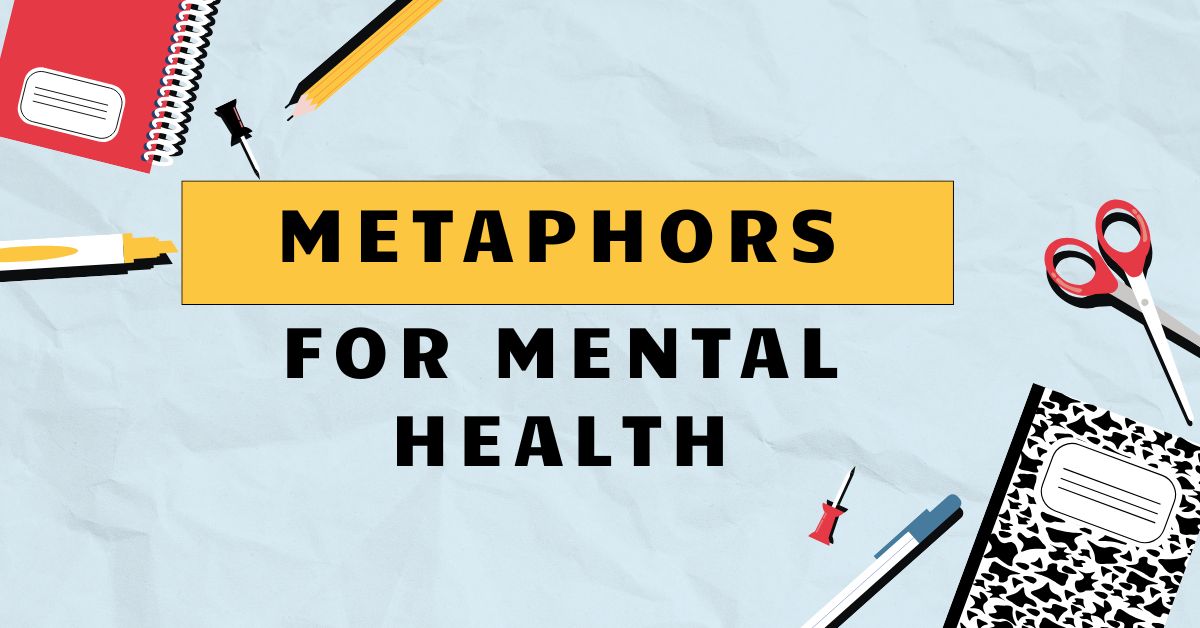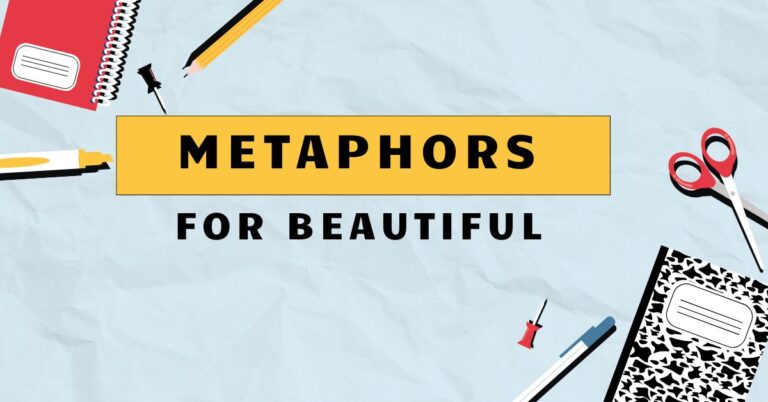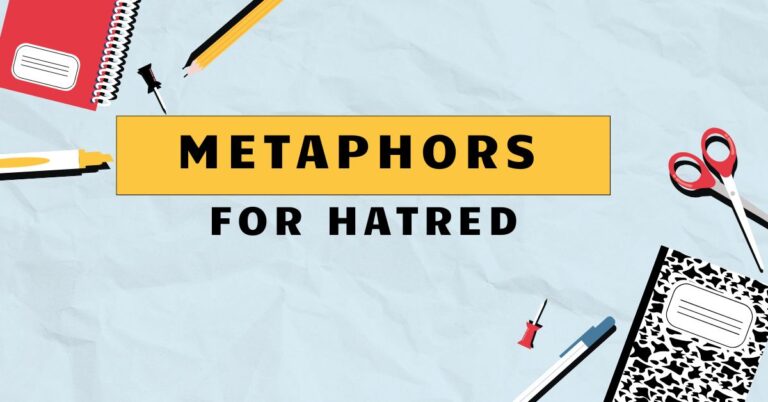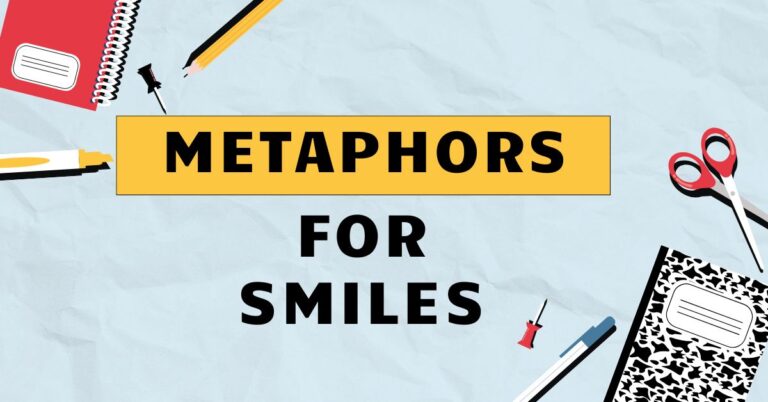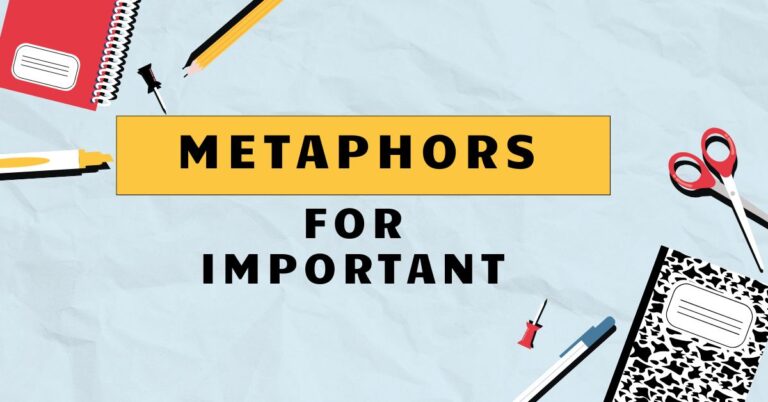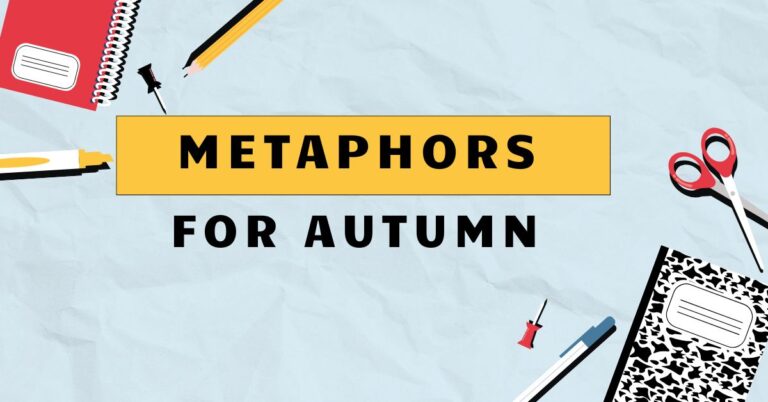50 Metaphors for Mental Health: Understanding Figurative Language
Metaphors are powerful tools in language, allowing us to understand abstract concepts by relating them to more concrete ideas. In the realm of mental health, metaphors can be exceptionally useful.
They provide a way to articulate complex emotions and experiences that are often difficult to express directly. Understanding how metaphors are used in this context not only enhances our comprehension of mental health issues but also improves our ability to communicate about them effectively.
This article will explore the various ways metaphors are employed to describe mental health, their structural elements, and practical applications. This guide will benefit students, educators, mental health professionals, and anyone interested in improving their understanding and communication regarding mental well-being.
Table of Contents
- Introduction
- Definition of Metaphor in Mental Health
- Structural Breakdown of Mental Health Metaphors
- Types and Categories of Mental Health Metaphors
- Examples of Mental Health Metaphors
- Usage Rules for Mental Health Metaphors
- Common Mistakes When Using Mental Health Metaphors
- Practice Exercises
- Advanced Topics in Mental Health Metaphors
- Frequently Asked Questions
- Conclusion
Definition of Metaphor in Mental Health
A metaphor is a figure of speech that directly compares two unrelated things without using “like” or “as.” It asserts that one thingisanother, creating a vivid and often insightful connection. In the context of mental health, metaphors serve as a crucial tool for expressing and understanding experiences that are often intangible and difficult to articulate.
These metaphors help bridge the gap between subjective feelings and objective understanding, allowing individuals and professionals to communicate more effectively about mental well-being.
Metaphors in mental health do not merely decorate language; they fundamentally shape how we perceive and conceptualize mental states. By framing mental health conditions in terms of more familiar experiences, metaphors make these conditions more accessible and less stigmatizing.
They provide a framework for understanding complex emotions and behaviors, fostering empathy and promoting open dialogue. They are vital for both personal reflection and professional communication.
The function of metaphors in mental health is threefold: toexplain, toevoke, and toempower. They explain complex conditions in simpler terms, evoke emotional resonance, and empower individuals to articulate their experiences.
These functions contribute significantly to reducing stigma, promoting understanding, and facilitating effective communication in mental health contexts. They are not just stylistic devices but essential cognitive tools.
Structural Breakdown of Mental Health Metaphors
Understanding the structure of a metaphor involves recognizing its two main components: thetenorand thevehicle. The tenor is the subject being described (e.g., depression), while the vehicle is the concept used to describe the tenor (e.g., a dark cloud).
The connection between the tenor and vehicle creates meaning, allowing us to understand the tenor in a new light. The effectiveness of a metaphor depends on the resonance between the tenor and vehicle.
Consider the metaphor “Depression is a heavy weight.” Here, “depression” is the tenor, and “a heavy weight” is the vehicle. The metaphor suggests that depression, like a heavy weight, is burdensome, difficult to carry, and can slow you down.
This structural understanding allows us to analyze and appreciate the nuances of different metaphors used in mental health contexts. The relationship between the tenor and vehicle helps convey the emotional and psychological impact of the mental health condition.
The interpretative aspect of metaphors is crucial. While some metaphors may be universally understood, others are culturally specific or personally meaningful.
Cultural context and individual experiences shape how metaphors are interpreted. Therefore, it’s important to be sensitive to these variations when using or interpreting mental health metaphors.
A metaphor that resonates with one person may not resonate with another, highlighting the subjective nature of language and experience.
Types and Categories of Mental Health Metaphors
Mental health metaphors can be categorized based on the types of concepts they employ to describe mental states. Here are some common categories:
Journey Metaphors
Journey metaphors frame mental health experiences as a path, voyage, or quest. These metaphors often involve terms like “struggle,” “progress,” “setbacks,” and “recovery.” The journey metaphor highlights the process of dealing with mental health issues, emphasizing that it is a process involving ups and downs.
It can also instill hope by suggesting that recovery is a possible destination.
Weather Metaphors
Weather metaphors use elements like storms, clouds, sunshine, and rain to describe mental states. These metaphors often convey the fluctuating and unpredictable nature of emotions.
For example, “a dark cloud hanging over” someone can represent depression, while “sunny disposition” can indicate happiness. Weather metaphors are effective because they tap into our shared experiences of the natural world.
Weight Metaphors
Weight metaphors describe mental health conditions as burdens or loads. Terms like “heavy,” “burden,” and “weigh down” are common.
These metaphors emphasize the oppressive and draining nature of conditions like depression and anxiety. They convey the sense of being overwhelmed and struggling to cope.
Container Metaphors
Container metaphors describe mental states as being contained within or spilling out of a container. Phrases like “bottling up emotions” or “overflowing with sadness” are examples.
These metaphors highlight the idea that emotions can be contained or released, suggesting a need for healthy emotional regulation. They also reflect the feeling of being overwhelmed or controlled by one’s emotions.
Battle Metaphors
Battle metaphors frame mental health challenges as a fight or struggle against an enemy. Terms like “fighting depression,” “battling anxiety,” and “winning the war” are common.
While these metaphors can be empowering for some, they may also be problematic for others, as they can create a sense of pressure to “win” and may not reflect the ongoing nature of mental health management. The language of battle can be both motivating and potentially harmful.
Darkness and Light Metaphors
Darkness and light metaphors use the contrast between darkness and light to represent negative and positive mental states, respectively. Darkness can symbolize depression, despair, or confusion, while light can represent hope, clarity, or happiness.
These metaphors are deeply rooted in our cultural understanding of good and evil, making them easily accessible and emotionally resonant. They provide a simple yet powerful way to convey the spectrum of human emotion.
Examples of Mental Health Metaphors
The following examples illustrate the diverse ways metaphors are used to describe various mental health conditions and experiences. These examples are categorized to show the different types of metaphors discussed earlier.
Understanding these examples can help in recognizing and using metaphors effectively in communication.
Journey Metaphor Examples
These examples illustrate how mental health journeys are often described using metaphors related to travel, obstacles, and progress.
| Metaphor | Explanation |
|---|---|
| “Navigating the labyrinth of anxiety.” | Anxiety is portrayed as a complex and confusing maze, requiring careful navigation. |
| “Embarking on a journey to recovery.” | Recovery is framed as a deliberate and significant undertaking. |
| “Hitting a roadblock in my mental health journey.” | Experiencing a setback or obstacle in the process of recovery. |
| “Climbing the mountain of depression.” | Depression is seen as a challenging and arduous ascent. |
| “Sailing through the sea of grief.” | Grief is depicted as a vast and potentially overwhelming ocean. |
| “Wandering lost in the woods of my mind.” | Feeling disoriented and confused in one’s own thoughts and emotions. |
| “Stumbling upon a clearing in the forest of despair.” | Finding a moment of relief or clarity amidst feelings of hopelessness. |
| “Mapping out a new course for my well-being.” | Actively planning and strategizing for improved mental health. |
| “The long and winding road to self-acceptance.” | Self-acceptance is portrayed as a gradual and challenging process. |
| “Crossing the bridge from trauma to healing.” | Healing from trauma is represented as a significant transition. |
| “Lost at sea without a compass, adrift in depression.” | Feeling directionless and overwhelmed by depression. |
| “The uphill battle to regain my mental strength.” | Regaining mental strength is seen as a difficult and ongoing struggle. |
| “Finding my footing on the shaky ground of recovery.” | Establishing stability and confidence in the recovery process. |
| “Taking baby steps towards a brighter future.” | Making small, incremental progress toward improved mental well-being. |
| “Following the breadcrumbs back to my authentic self.” | Discovering and embracing one’s true identity through self-discovery. |
| “The arduous trek through the wilderness of PTSD.” | Experiencing PTSD is portrayed as a difficult and challenging journey. |
| “Reaching a plateau in my emotional growth.” | Experiencing a period of stagnation or lack of progress in emotional development. |
| “Charting a new path through the landscape of my mind.” | Exploring and understanding one’s own thoughts and emotions. |
| “The winding staircase of personal development.” | Personal growth is seen as a gradual and multi-faceted process. |
| “Navigating the rapids of emotional turmoil.” | Experiencing intense and turbulent emotions. |
Weather Metaphor Examples
These examples show how weather metaphors are used to describe the emotional climate of mental health conditions.
| Metaphor | Explanation |
|---|---|
| “A storm of emotions raging inside.” | Intense and overwhelming feelings are likened to a violent storm. |
| “Feeling under a dark cloud of depression.” | Depression is portrayed as a pervasive and oppressive presence. |
| “A ray of sunshine breaking through the clouds of despair.” | A moment of hope or positivity amidst feelings of hopelessness. |
| “The fog of anxiety clouding my mind.” | Anxiety is depicted as a disorienting and obscuring force. |
| “A gentle breeze of calm washing over me.” | Experiencing a sense of peace and tranquility. |
| “The torrential downpour of grief flooding my soul.” | Grief is portrayed as an overwhelming and intense experience. |
| “A heatwave of anger burning within me.” | Experiencing intense and uncontrolled anger. |
| “The icy grip of fear chilling me to the bone.” | Fear is depicted as a paralyzing and terrifying force. |
| “A sunny disposition radiating warmth and happiness.” | A positive and cheerful attitude is portrayed as a source of light and joy. |
| “The calm after the storm, a sense of peace returning.” | Experiencing tranquility and relief after a period of intense emotional turmoil. |
| “The gathering clouds of a panic attack looming overhead.” | Anticipating and fearing the onset of a panic attack. |
| “A light drizzle of sadness on an otherwise ordinary day.” | Experiencing mild and transient feelings of sadness. |
| “The thunderous roar of self-criticism echoing in my mind.” | Engaging in harsh and negative self-talk. |
| “A rainbow of hope appearing after the rain of despair.” | Finding hope and optimism after a period of sadness and hopelessness. |
| “The biting wind of loneliness cutting through my heart.” | Experiencing intense feelings of isolation and disconnection. |
| “A blanket of calm covering my anxious thoughts.” | Finding a sense of peace and tranquility that soothes anxious thoughts. |
| “The sweltering heat of frustration building up inside me.” | Experiencing increasing levels of frustration and irritation. |
| “A refreshing shower of self-compassion washing away the guilt.” | Practicing self-compassion to alleviate feelings of guilt and shame. |
| “The dark, ominous clouds of uncertainty gathering in my mind.” | Feeling apprehensive and unsure about the future. |
| “A gentle snowfall of peace blanketing my troubled thoughts.” | Experiencing a sense of calm and serenity that quiets anxious thoughts. |
Weight Metaphor Examples
Here are examples of how weight metaphors illustrate the burden and pressure associated with mental health challenges.
| Metaphor | Explanation |
|---|---|
| “Carrying the weight of the world on my shoulders.” | Feeling overwhelmed by responsibilities and burdens. |
| “The heavy burden of grief weighing me down.” | Grief is portrayed as a heavy and oppressive load. |
| “Feeling weighed down by anxiety.” | Anxiety is experienced as a burdensome and limiting force. |
| “The crushing weight of depression.” | Depression is depicted as an overwhelming and debilitating burden. |
| “Carrying the baggage of past trauma.” | Past trauma is portrayed as a heavy and difficult load to carry. |
| “The suffocating weight of expectations.” | Feeling overwhelmed by the pressure to meet external expectations. |
| “The invisible weight of social anxiety.” | Experiencing social anxiety as a constant and unseen burden. |
| “The crushing weight of self-doubt.” | Feeling overwhelmed by negative self-perceptions and lack of confidence. |
| “The heavy load of guilt and shame.” | Carrying significant feelings of guilt and shame. |
| “The unbearable weight of loneliness.” | Experiencing intense and profound feelings of isolation. |
| “The heavy cloak of sadness enveloping me.” | Feeling completely surrounded and weighed down by sadness. |
| “The burden of unspoken words weighing on my heart.” | Feeling burdened by the need to express suppressed emotions. |
| “The weight of responsibility crushing my spirit.” | Feeling overwhelmed by the demands and obligations of responsibility. |
| “The heavy chains of addiction binding me.” | Portraying addiction as a restrictive and oppressive force. |
| “The weight of grief pressing down on my chest.” | Experiencing grief as a physical and emotional burden. |
| “The heavy anchor of regret holding me back.” | Regret is portrayed as a force that prevents progress and growth. |
| “The weight of secrets burdening my soul.” | Feeling burdened by the need to keep secrets hidden. |
| “The crushing weight of failure looming over me.” | Experiencing intense fear and anxiety about failing. |
| “The heavy shroud of despair clouding my vision.” | Feeling completely enveloped in hopelessness and despair. |
| “The weight of past mistakes dragging me down.” | Feeling burdened and held back by past errors and regrets. |
Usage Rules for Mental Health Metaphors
When using metaphors for mental health, it’s important to be mindful of their potential impact. Here are some guidelines:
- Be sensitive: Choose metaphors that are respectful and avoid trivializing mental health conditions.
- Consider context: Tailor your metaphors to the specific situation and audience.
- Avoid clichés: Strive for originality to make a more meaningful impact.
- Be clear: Ensure that your metaphor is easily understood and doesn’t confuse the listener.
- Use sparingly: Overuse of metaphors can diminish their impact.
Cultural sensitivity is paramount. Metaphors that resonate in one culture may not in another.
Be aware of cultural differences in how mental health is perceived and discussed. Always consider the potential for misinterpretation or offense.
The goal is to enhance understanding, not to alienate or offend.
Personal preferences also play a role. Some individuals may find certain metaphors helpful, while others may not.
Be open to feedback and willing to adjust your language based on individual preferences. Respecting individual differences is crucial for effective communication.
The individual’s comfort and understanding should always be prioritized.
Common Mistakes When Using Mental Health Metaphors
Several common mistakes can undermine the effectiveness of mental health metaphors. Here are some examples to avoid:
| Incorrect | Correct | Explanation |
|---|---|---|
| “Just snap out of it!” (implying mental health is a choice) | “I understand you’re going through a difficult time.” | Avoid trivializing mental health conditions. |
| “Depression is just a case of the blues.” | “Depression is a serious mental health condition that requires support.” | Avoid minimizing the severity of mental health issues. |
| “Anxiety is a monster you have to slay.” (overly aggressive metaphor) | “Anxiety is a challenge you can learn to manage.” | Avoid aggressive metaphors that may be off-putting. |
| “My mind is a computer that needs rebooting.” (overused cliché) | “My mind feels like a tangled web of thoughts.” | Avoid clichés and seek originality. |
| “Bipolar disorder is like being a little crazy.” | “Bipolar disorder is a complex condition characterized by mood swings.” | Avoid stigmatizing language and stereotypes. |
| “OCD is just being really organized.” | “OCD involves intrusive thoughts and compulsive behaviors that can be distressing.” | Avoid minimizing or misunderstanding the true nature of mental health conditions. |
| “PTSD is just dwelling on the past.” | “PTSD is a trauma-related disorder that can significantly impact a person’s life.” | Avoid oversimplifying complex conditions like PTSD. |
| “You’re just being dramatic.” (when someone expresses emotional distress) | “I hear you’re feeling overwhelmed. How can I support you?” | Avoid dismissing or invalidating someone’s feelings. |
| “Mental illness is a sign of weakness.” | “Mental health is an important aspect of overall well-being, and seeking help is a sign of strength.” | Avoid perpetuating harmful stereotypes about mental health. |
| “Therapy is for crazy people.” | “Therapy is a valuable tool for improving mental health and well-being.” | Avoid stigmatizing mental health treatment. |
Misinterpreting metaphors can also lead to misunderstandings. For example, if someone says “I’m drowning in stress,” it doesn’t mean they are literally drowning.
It means they are feeling overwhelmed. Always consider the intended meaning and context.
Clarification is essential if you’re unsure about the meaning behind a metaphor. It’s also important to be aware that some people may not understand or appreciate metaphors, so it’s important to be flexible in your communication style.
Practice Exercises
Test your understanding of mental health metaphors with these exercises.
Exercise 1: Identifying Metaphors
Identify the metaphor in each sentence and explain its meaning.
| Question | Answer |
|---|---|
| “Her anxiety is a tangled web.” | Metaphor: “tangled web.” Meaning: Anxiety is complex, confusing, and difficult to escape. |
| “He’s been navigating a storm of emotions.” | Metaphor: “storm of emotions.” Meaning: He is experiencing intense and turbulent feelings. |
| “Depression is a heavy cloak she can’t shake off.” | Metaphor: “heavy cloak.” Meaning: Depression is a burdensome and persistent condition. |
| “His mind is a battlefield of conflicting thoughts.” | Metaphor: “battlefield.” Meaning: He is experiencing internal conflict and mental turmoil. |
| “Recovery is a marathon, not a sprint.” | Metaphor: “marathon.” Meaning: Recovery is a long and enduring process. |
| “Her resilience is a lighthouse in the storm.” | Metaphor: “lighthouse.” Meaning: Resilience provides guidance and hope during difficult times. |
| “His anger is a volcano about to erupt.” | Metaphor: “volcano.” Meaning: His anger is building up and is likely to explode. |
| “Loneliness is a deep, dark well.” | Metaphor: “deep, dark well.” Meaning: Loneliness is profound, isolating, and difficult to escape. |
| “Hope is a fragile seedling.” | Metaphor: “fragile seedling.” Meaning: Hope is delicate and needs to be nurtured. |
| “Grief is a long shadow that follows her.” | Metaphor: “long shadow.” Meaning: Grief is a persistent and lingering presence. |
Exercise 2: Creating Metaphors
Create a metaphor to describe each mental health condition.
| Condition | Your Metaphor |
|---|---|
| Anxiety | Anxiety is a relentless current pulling you under. |
| Depression | Depression is a thick fog that obscures all joy. |
| Stress | Stress is a pressure cooker building towards an explosion. |
| Grief | Grief is an open wound that slowly heals. |
| Resilience | Resilience is a sturdy tree bending in the wind but never breaking. |
| Panic Attack | A panic attack is a runaway train, spiraling out of control. |
| Self-Doubt | Self-doubt is a persistent whisper undermining your confidence. |
| Burnout | Burnout is an empty well, unable to provide any more water. |
| Acceptance | Acceptance is a gentle embrace of what is, without resistance. |
| Forgiveness | Forgiveness is releasing the heavy stones you’ve been carrying. |
Exercise 3: Correcting Misused Metaphors
Identify and correct the misused metaphor in each sentence.
| Incorrect | Correct | Explanation |
|---|---|---|
| “Just get over your depression!” | “I understand you’re going through a tough time with your depression. How can I support you?” | This trivializes the experience of depression. |
| “Anxiety is just being dramatic.” | “I hear you’re feeling anxious. Let’s talk about what’s causing it.” | This dismisses the reality of anxiety. |
| “Therapy is for crazy people.” | “Therapy can be a helpful tool for improving mental well-being.” | This perpetuates stigma. |
| “Snap out of your PTSD!” | “PTSD is a complex condition, and it’s understandable that you’re struggling.” | This minimizes the impact of trauma. |
| “Your mind is a broken record.” | “Your thoughts seem to be stuck in a loop.” | This is a cliché and not sensitive. |
| “Just toughen up and ignore your feelings.” | “It’s important to acknowledge and process your feelings in a healthy way.” | This promotes emotional suppression, which is unhealthy. |
| “You’re just seeking attention.” | “It sounds like you’re going through something difficult. I’m here to listen.” | This invalidates someone’s need for support. |
| “Stop dwelling on the past.” | “It’s understandable that you’re still processing what happened. Let’s explore healthy coping mechanisms.” | This dismisses the impact of past experiences. |
| “You’re just being negative.” | “I hear you’re feeling discouraged. Let’s focus on finding solutions.” | This invalidates someone’s feelings and shuts down communication. |
| “Pull yourself up by your bootstraps.” | “It’s okay to ask for help when you’re struggling. I’m here to support you.” | This promotes the idea that individuals should handle everything on their own, which can be harmful. |
Advanced Topics in Mental Health Metaphors
For advanced learners, it’s important to explore the theoretical underpinnings of metaphors and their impact on mental health discourse. Conceptual Metaphor Theory, developed by George Lakoff and Mark Johnson, suggests that metaphors are not just linguistic devices but fundamental to how we think and understand the world.
This theory posits that our conceptual system is largely metaphorical, meaning that we understand abstract concepts in terms of more concrete ones. Applying this theory to mental health can provide deeper insights into how metaphors shape our perceptions and attitudes towards mental illness.
The use of metaphors in therapy is another advanced topic. Therapists often use metaphors to help clients understand their experiences and develop new perspectives.
For example, a therapist might use the metaphor of a “garden” to help a client understand the process of personal growth, suggesting that tending to one’s mental health is like tending to a garden – it requires patience, care, and attention. Understanding how to effectively use metaphors in therapy requires training and sensitivity.
Analyzing the cultural variations in mental health metaphors is also an important area of study. Different cultures may use different metaphors to describe similar mental health conditions, reflecting different cultural values and beliefs.
For example, some cultures may use metaphors related to spiritual possession to describe mental illness, while others may use more medicalized metaphors. Understanding these cultural variations is crucial for providing culturally sensitive mental health care.
This requires a deep understanding of cultural contexts and linguistic nuances.
Frequently Asked Questions
- What is the difference between a metaphor and a simile?
A metaphor directly equates two unlike things (e.g., “Depression is a dark cloud”), while a simile compares them using “like” or “as” (e.g., “Depression is like a dark cloud”). Metaphors are more assertive and create a stronger connection.
- Why are metaphors useful in discussing mental health?
Metaphors help make abstract and complex mental health concepts more understandable and relatable. They provide a framework for communication and can reduce stigma by framing conditions in familiar terms.
- Can metaphors be harmful in the context of mental health?
Yes, if they are insensitive, trivializing, or perpetuate stereotypes. It’s important to choose metaphors carefully and be mindful of their potential impact.
- How can I improve my use of metaphors in mental health communication?
Practice using metaphors in different contexts, seek feedback from others, and be mindful of cultural and individual preferences. Read literature and listen to how others use metaphors effectively.
- What is Conceptual Metaphor Theory?
Conceptual Metaphor Theory suggests that metaphors are not just linguistic devices but fundamental to how we think and understand the world. It posits that our conceptual system is largely metaphorical.
- How do cultural differences affect the use of mental health metaphors?
Different cultures may use different metaphors to describe similar mental health conditions, reflecting different cultural values and beliefs. Cultural sensitivity is crucial when using metaphors.
- Are there specific metaphors to avoid when discussing mental health?
Yes, avoid metaphors that trivialize, stigmatize, or promote harmful stereotypes about mental health conditions. Examples include “just snap out of it” or “it’s all in your head.”
- How can therapists use metaphors to help their clients?
Therapists can use metaphors to help clients understand their experiences, develop new perspectives, and explore their emotions in a safe and relatable way. Metaphors can also facilitate communication and build rapport.
- What role does personal experience play in understanding mental health metaphors?
Personal experience can significantly influence how one interprets and relates to mental health metaphors. Individuals who have experienced mental health challenges may have a deeper understanding and connection to certain metaphors than those who have not.
- How can metaphors help reduce the stigma surrounding mental health?
Metaphors can help reduce stigma by framing mental health conditions in more understandable and relatable terms, promoting empathy and understanding, and challenging negative stereotypes.
- Is it possible to overuse metaphors when discussing mental health?
Yes, overuse of metaphors can diminish their impact and make communication confusing or unclear. It’s important to use metaphors sparingly and ensure they enhance, rather than detract from, the message.
Conclusion
Metaphors are invaluable tools for understanding and communicating about mental health. By bridging the gap between abstract concepts and concrete experiences, metaphors make complex emotions and conditions more accessible and relatable.
Understanding the structural elements, types, and usage rules of mental health metaphors empowers individuals to express themselves more effectively and fosters empathy and understanding in others. This knowledge is crucial for mental health professionals, educators, and anyone interested in promoting mental well-being.
Remember to use metaphors sensitively, considering cultural and individual preferences. Avoid clichés and strive for originality to create a meaningful impact.
By practicing and refining your use of metaphors, you can contribute to a more nuanced and compassionate understanding of mental health. Continue to explore the power of figurative language in promoting mental well-being and reducing stigma.
Embrace the journey of learning and applying these tools to foster deeper connections and understanding in your interactions.

